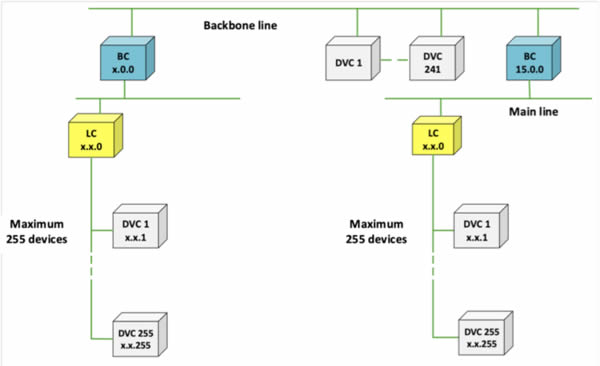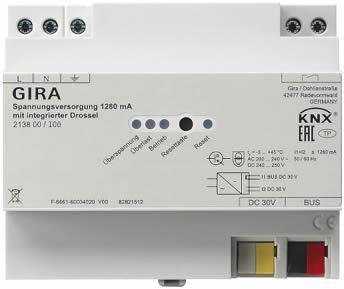 By Mark Warburton, Ivory Egg.
By Mark Warburton, Ivory Egg.
The KNX Association has recently announced the completion of a long-running project to update the system topology in order to make KNX even easier and simpler to use. Until now, the smallest part of the topology is a line segment with 64 devices. To expand the line, line repeaters can be used to add 4 segments together to create a total of 256 devices on each line. The reason for these limits is to ensure the integrity of the KNX telegram as it passes through multiple devices.
With advancements in electronics, an update was made to the specification for how a device connects to the bus, which meant that KNX telegrams could pass through 4 times as many devices before the telegram would start to be affected. Known as TP1-256, this newer standard means a total of 256 devices can be connected to a single line without the need for line repeaters.
Over the last few years, the KNX Association has been monitoring the number of products using this new standard and has been waiting for the right time to make the change. As this has now happened, the KNX Basic Course has been updated to reflect the new topology with line repeaters mentioned as a legacy solution.
Another impact this change has is that the Line 0 (area line) and Area 0 (backbone line) can now have 256 devices instead of being limited to 64. This still needs to include any line couplers (LCs) connected to the line, but it further increases the flexibility of the topology.

Compatibility
The great news is that the two types of bus coupling (BC) unit are completely compatible. In fact, we have all been using a mixture of the devices without knowing it. If you want to take advantage of the new topology and need to have a mixture of TP1-64 and TP1-256 devices, then the following formula should be used:
(4 x M x TP1-64) + (N x TP1-256) < 257, where M and N are the number of each device type.
This allows for a maximum of 64 x TP1-64 devices (since 4 x 64 = 256) or 256 x TP1-256 devices, and any combination that respects the 256 device limit e.g. 32 x TP1-64 devices + 128 x TP1-256 devices (since 4 x 32 + 128 = 256).
Power supply
This doesn’t change the way KNX power supplies work and the normal load calculations still need to take place. Given that the majority of KNX power supplies are 640mA, most KNX lines will still have around 64 devices on them. Once the load limit is reached, you will need to create a new line or use a line repeater to create a segment, as per the old topology.
There are some KNX power supplies that take advantage of the new topology such as the Gira 1280mA (2138 00) which was featured in this article <https://www.knxtoday.com/2017/11/10426/tips-knx-power-supplies-theres-more-choice-than-you-think.html>. Whether we will see even larger power supplies that could cope with a full 256 devices on a line remains to be seen, but for now, the number of devices is limited more by consumption of the devices than the topology.

Implementation
As a distributor working with numerous KNX manufacturers, we have done a quick check and found the support for TP1-256 to be near universal, with only a few older products and one or two manufacturers not working to this newer standard. But given the backwards compatibility and option to use the existing topology with line repeaters, we really don’t see this as being an issue.
Conclusion
Whilst this seems like a fairly arbitrary change, and one that has taken a few years to filter down from the KNX standard to actual products, it is another example of KNX having one eye on the future whilst ensuring the past is still considered. Or to put it another way, maintaining full backwards compatibility has always been a key strength of the KNX standard, but that doesn’t mean we that can’t take advantage of newer ways of doing things. It also simplifies system design and has the potential to reduce system costs, particularly on smaller projects – which can only be a good thing.
Mark Warburton is the Technical Director of Ivory Egg (UK) Ltd, a supplier of leading KNX products and provider of KNX training courses.










